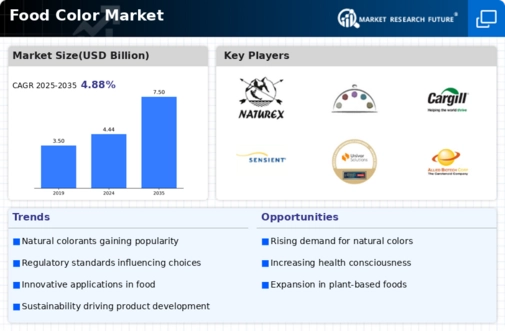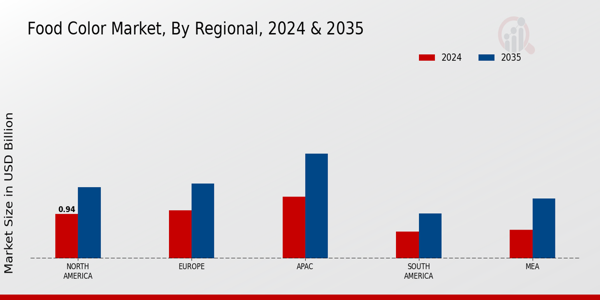Market Trends
Key Emerging Trends in the Food Color Market
The food color market is witnessing dynamic trends driven by evolving consumer preferences, regulatory changes, and advancements in food technology. One prominent trend in the market is the increasing demand for natural food colors derived from plant, fruit, and vegetable sources. As consumers become more health-conscious and wary of artificial additives, there is a growing preference for food colors made from natural ingredients. Manufacturers are responding to this trend by reformulating their products to incorporate natural colors, replacing synthetic dyes such as FD&C Red No. 40 and Yellow No. 5 with alternatives like turmeric, beet juice, and spirulina extract.
Moreover, the market for food colors is influenced by the rising popularity of clean label and transparent labeling practices. Consumers are increasingly scrutinizing food labels, seeking products with simple and recognizable ingredients. As a result, there is a growing demand for clean label food colors made from natural sources, free from artificial additives and preservatives. Manufacturers are reformulating their products and replacing synthetic colors with natural alternatives to meet consumer expectations for clean and transparent labeling.
Another significant trend in the food color market is the increasing use of food colors in functional and fortified food products. With the growing interest in health and wellness, consumers are seeking out foods and beverages fortified with vitamins, minerals, and other functional ingredients. Food colors are being used to enhance the visual appeal of these products and denote specific health benefits, such as antioxidants or immunity-boosting properties. This trend is driving innovation in the food color market, with manufacturers developing new formulations tailored to meet the demands of the functional food and beverage sector.
Furthermore, the market for food colors is influenced by regulatory changes and certification requirements governing food safety and quality. Regulatory bodies such as the Food and Drug Administration (FDA) in the United States and the European Food Safety Authority (EFSA) in Europe set strict guidelines for the use of food colors in products intended for human consumption. Manufacturers must ensure that their food colors comply with these regulations and obtain necessary certifications to demonstrate safety and efficacy.
Additionally, the food color market is benefiting from advancements in food technology and manufacturing processes. Innovations in extraction techniques, encapsulation technologies, and nano-emulsification methods are enabling manufacturers to produce food colors with improved stability, solubility, and sensory properties. These advancements allow for greater versatility in the application of food colors across a wide range of food and beverage products, driving market growth and expanding opportunities for product innovation.














Leave a Comment